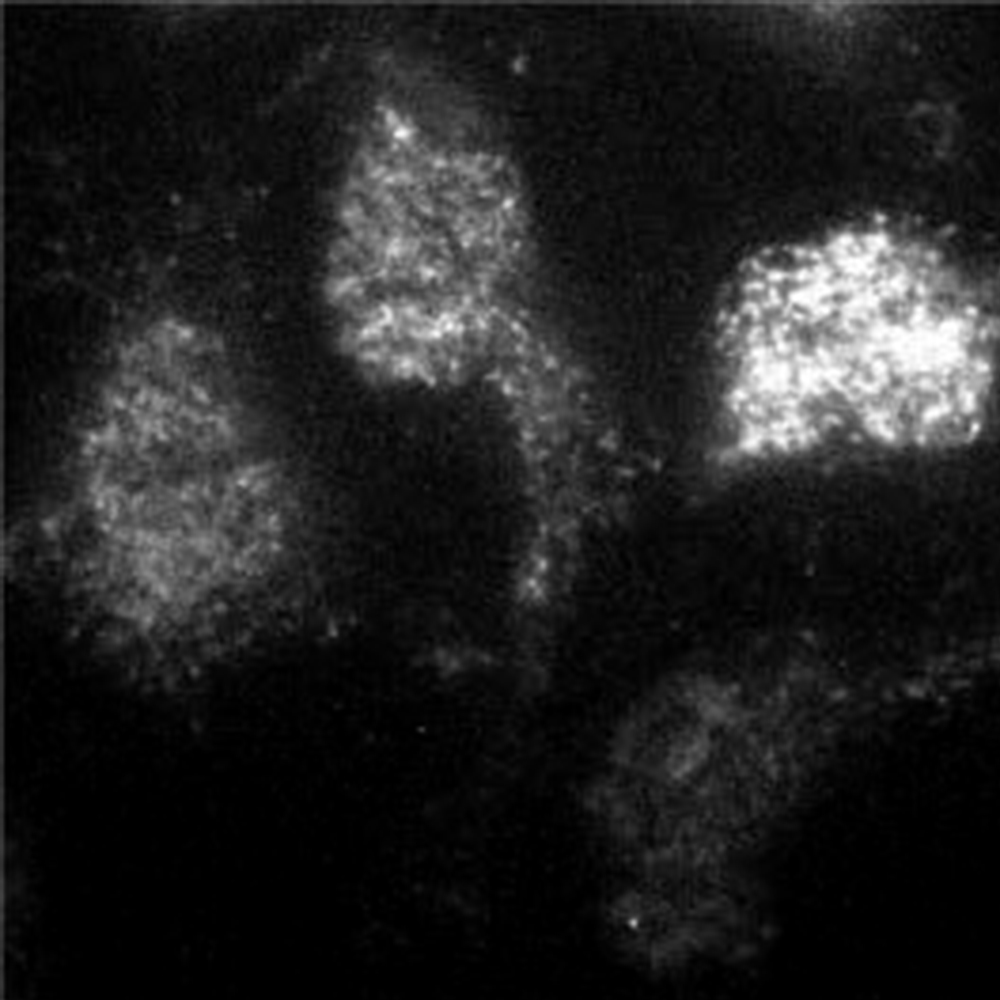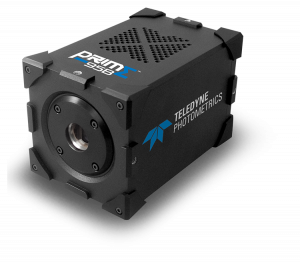Gerry Hammond, Ph.D., Assistant Professor
Simon Watkins, PhD., Founder and Director of the Center for Biologic Imaging
University of Pittsburgh
Background
Gerry Hammond studies membrane trafficking and intracellular signaling and regulation in the Center for Biologic Imaging at University of Pittsburgh. Working with Simon Watkins, Director of the Center, they use gene editing technology to fuse GFP to endogenous alleles. They then use a combination of Total Internal Reflection Fluorescence Microscopy (TIRF) and other techniques to study the mechanisms of how inositol lipids effect membrane function and transport of nutrients in disease. Dr. Hammond shared, “We use TIRF because we are interested in what’s happening at the interface between the plasma membrane and the endoplasmic reticulum which sits very close to it.”

Camera: Prime 95B
Magnification: 100x TIRF
Binning: 2×2
Challenge
When tagging genes at their endogenous loci, low expression levels are often a problem. This results in low levels of fluorescence and produces images with very low signal to noise. “The amount of fluorophore that you’ve got [in the sample] is much less than you’d normally have, but of course that’s the advantage because we get to see how the endogenous protein is behaving in a living cell,” Dr. Hammond explains.
I think the Prime 95B [Scientific CMOS camera] is a very innovative product. Partly because of the back thinning but also because the pixel size is more appropriate than conventional Scientific CMOS cameras.
Solution
Dr. Hammond told us, “The advantage of the Prime 95B [Scientific CMOS] for me was the improved sensitivity over other CMOS cameras but with all the advantages that come with CMOS technology like acquisition speed and a larger chip size.”
Dr. Watkins added, “The 11 micron pixel size with the 100x objective that Gerry and I are using gets us much closer to Nyquist sampling in XY… If you combine the back-thinning and the more appropriate pixel size you have much better resolution at higher sensitivity.”

